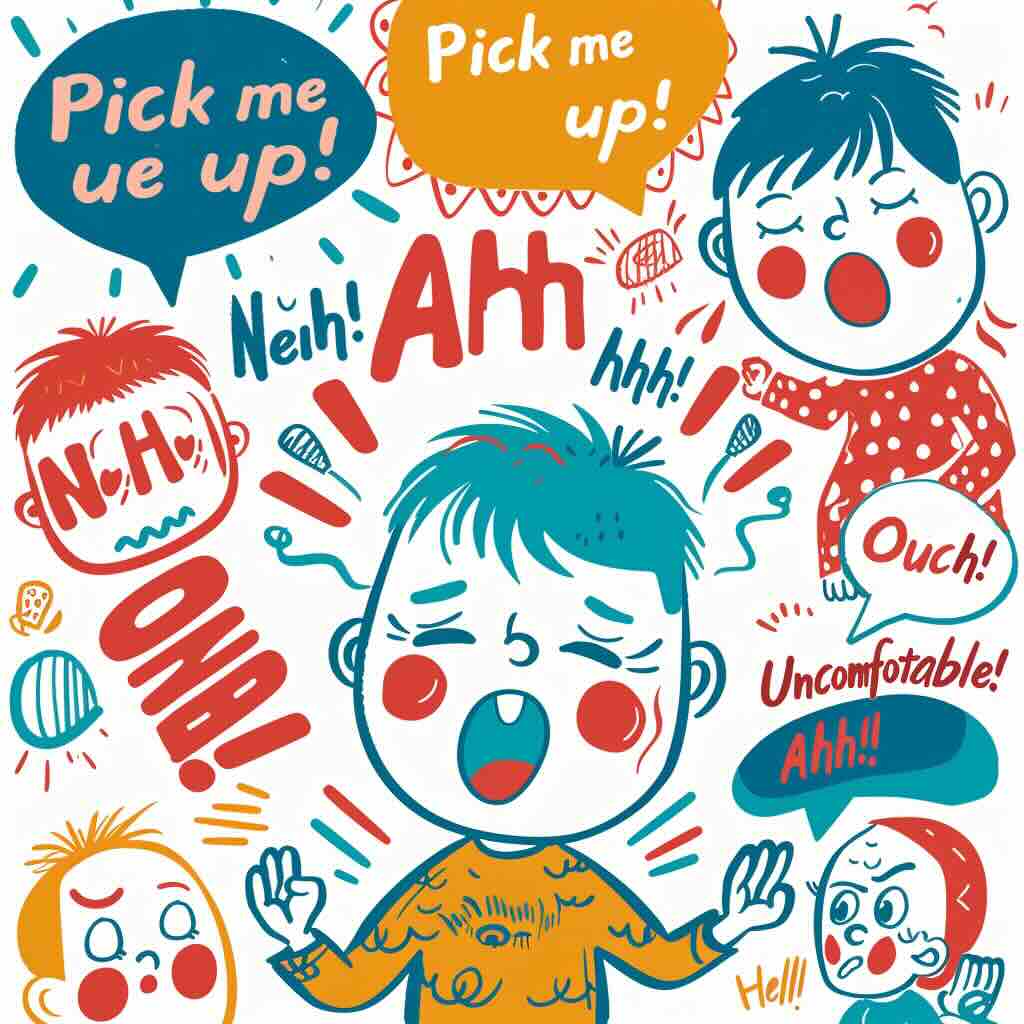Newborn cries can feel like a foreign language to a new parent. But fear not! Those gurgles, grunts, and wails are actually your baby’s way of communicating their needs. By learning to decipher their cries, body language, and even little vocalizations, you can become a pro at keeping your little bundle of joy happy and content.
The Symphony of Cries
Babies have a surprising range of cries, each with a specific meaning:
- The “Pick Me Up” Cry: This cry starts with short bursts, with pauses in between, as if your baby is calling out. It means they’re feeling lonely and crave your attention.
- The “Hangry” Cry: Similar to the “Pick Me Up” cry, this one escalates quickly if not addressed. Your baby might also rotate their head and root around for food.
- The “Ouch” Cry: A flat, continuous cry that intensifies could be a sign of pain. If you hear this, consult a doctor right away.
- The “Uncomfortable” Cry: Whining and squeaking cries often indicate physical discomfort from gas, a full diaper, or needing a temperature adjustment.
- The “Sleepy” Cry: An irritated whine followed by yawning is your baby’s way of saying “Lights out!” Look for sleepy cues like eye rubbing and ear pulling.
- The “Bored” Cry: After trying everything to soothe your baby’s cries, consider boredom. A change of scenery or a new activity might do the trick.
Beyond the Cry: Decoding Baby Talk
Even before they can speak, babies communicate through sounds:
- “Neh”: This sound, pushing their tongue to the roof of their mouth, translates to “I’m hungry!”
- “Ahh”: As excess air escapes, this sound signals a coming burp.
- “Heh”: A folded lip before a yawn? This is your baby saying, “Sleepy time!”
- “Owh”: Constant hand and foot movement alongside this sound means discomfort – maybe a wet diaper or feeling too hot.
- Elongated “Ehh”: This sound, turning into a moan, is a plea for help. They might be stretching their belly and exhaling.
Body Language: Your Baby’s Silent Speech
Pay attention to your baby’s movements to understand their needs:
- Arching Backs: For babies under two months, this could indicate pain or colic. During feeding, it might be reflux, while after eating, it signals fullness.
- Head Rotation: This is a calming self-soothing technique, often seen before sleep or when meeting new people.
- Ear Grabbing: Usually exploration, but if followed by intense crying, a doctor’s visit might be needed.
- Fist Power: A clenched fist means “Feed me!” A relaxed hand signals a full tummy, while a strong fist communicates urgent hunger.
- Leg Lifts: Especially in the first few months, babies lift their legs to relieve gas pain or tummy discomfort.
- The Startle Reflex: Loud noises, bright lights, or sudden wake-ups can trigger this reflex, causing jerky arm movements. Comfort your baby and reassure them.
Building a Strong Bond
By paying attention to your baby’s cries, sounds, and body language, you can create a deeper connection and respond to their needs effectively. Talk to them often, sing songs, and narrate your day. This not only strengthens your bond but also helps them develop their own communication skills. Remember, a happy baby makes a happy parent, and by deciphering their unique language, you’ll be well on your way to parenthood bliss.